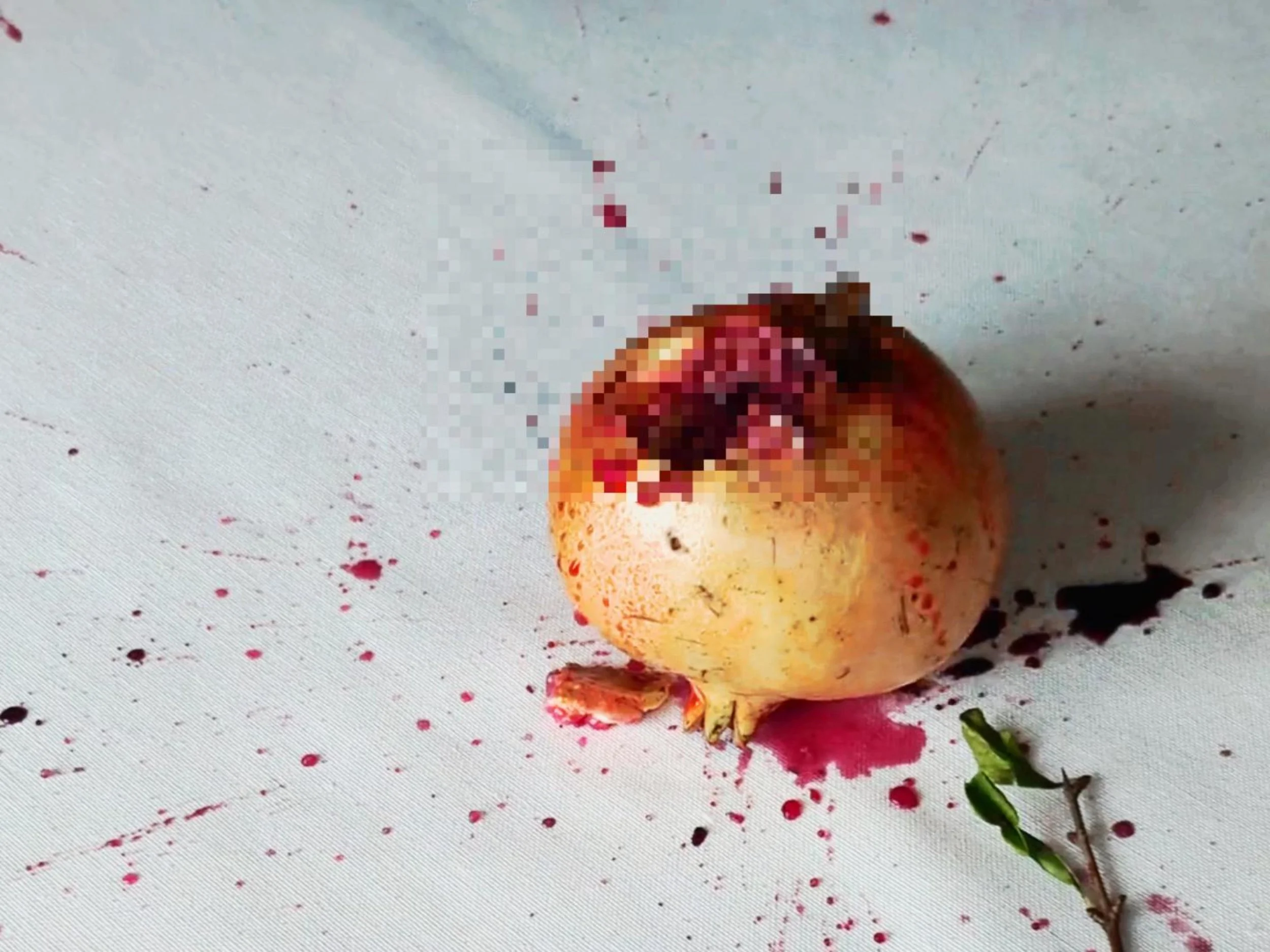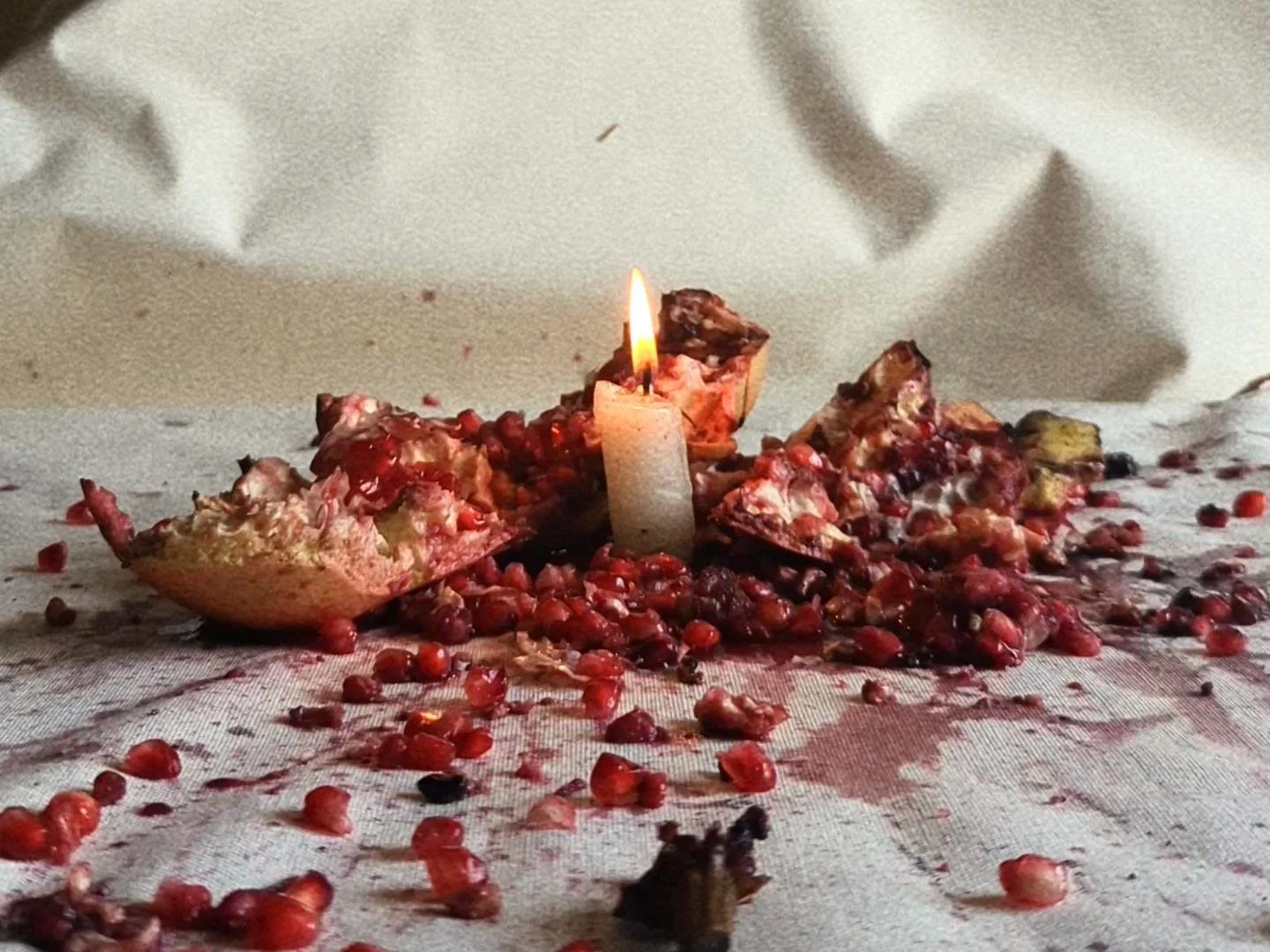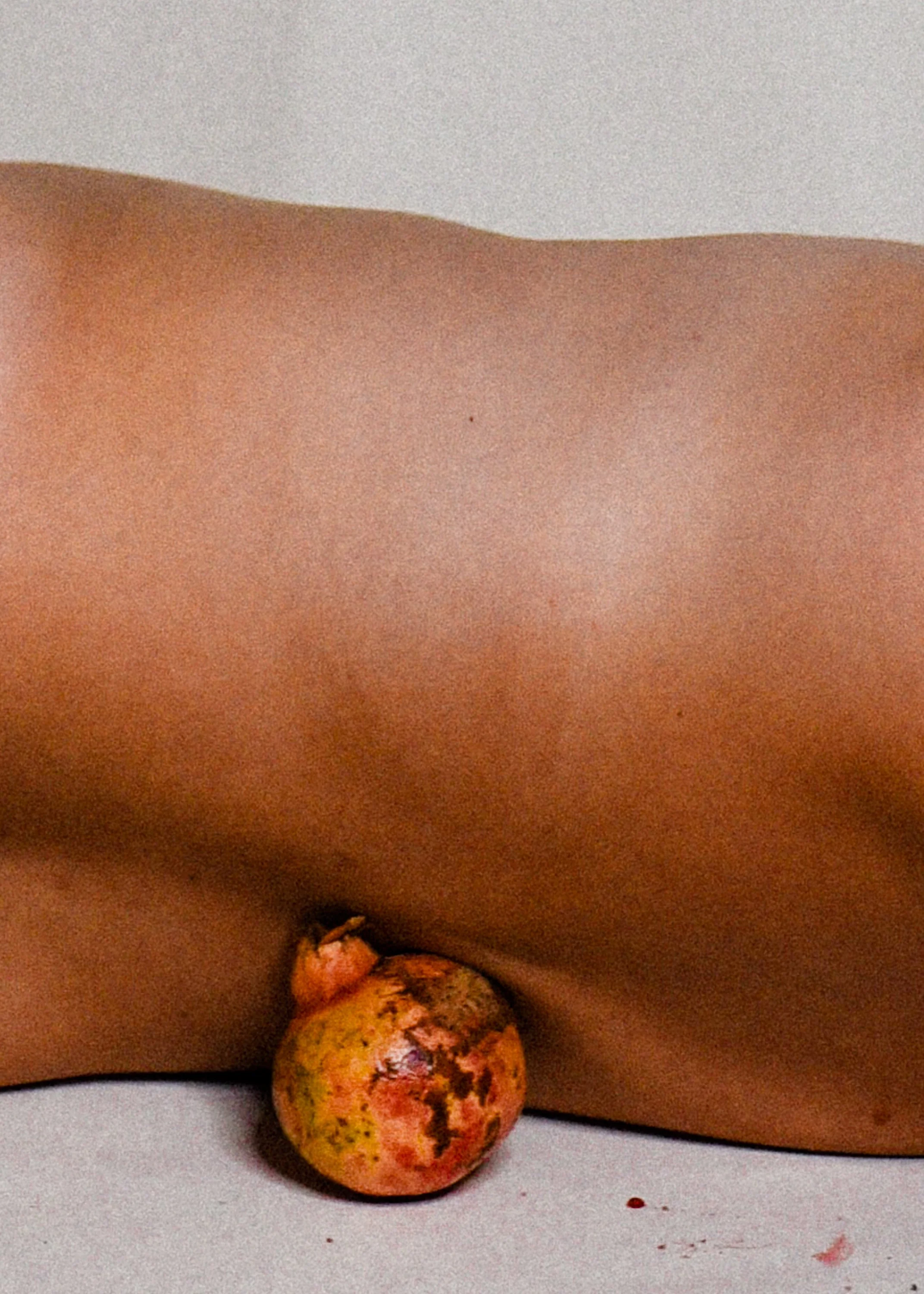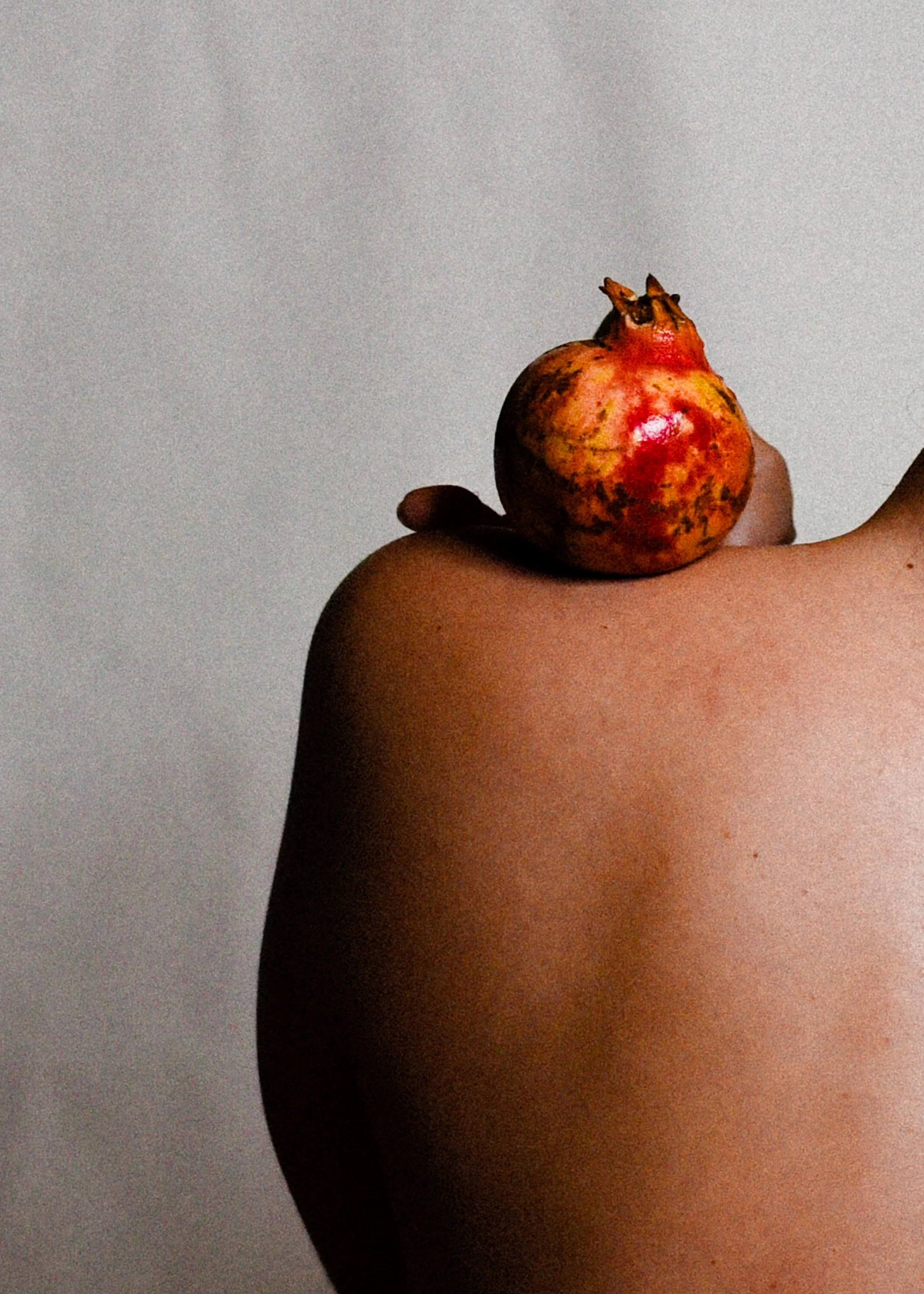
Kaddish is a three-part body of work created across Italy, and France between 2024 and 2025, in the shadow of personal grief, political collapse, and ongoing acts of erasure. The work resists closure. Mourning here is not an ending, but a fractured, looping ritual, performed in exile, addressed to the disappeared.
The project includes a performance video (Nirtzach), a second looped video (Kaddish), a series of five photographs, and a final text piece.
Together, they form a shattered prayer, a kaddish that cannot be spoken, only carried.
I. Nirtzach (נרצח)
Video performance
1’12 | No dialogue | Stereo sound
Filmed on the eve of Yom Kippur, Nirtzach begins with a single act: a pomegranate smashed by a hammer. The fruit, a sacred symbol in Jewish ritual and fertility myth, becomes the site of desecration. The sound design, composed afterwards, is built from a shared recording of an explosive belt, reframed and re-sounded.
The work stands in direct opposition to the slogan “ננצח / nanetzeaḥ” (we will win), replaced here by “נרצח / nirtzaḥ” (murdered).
Each strike ruptures not only fruit and flesh, but also belief systems, national language, and the use of faith as a tool for violence.
It is an act of witnessing, of holding the unbearable, of asking:
What happens when our hands are the ones that destroy?
And what prayer survives that?
II. Kaddish
Video installation
48 sec | Hebrew and Arabic | English subtitles | Stereo sound | Loop
The second part of a triptych, Kaddish was filmed in the aftermath of the performance Nirtzach. A candle burns among the shattered remains of the pomegranate.
The voice belongs to performer and friend Badoor Jbara, reciting a contemporary version of the Jewish Kaddish , rewritten by the artist in both English and Hebrew and translated to Arabic by Badoor Jbara. Aramaic, the original language of the Kaddish and the shared root of both tongues, becomes a conceptual bridge. Through this act of multilingual prayer, a silenced Middle Eastern Jewish heritage is reclaimed, bringing the languages back into one breath.
The piece plays in a continuous loop: a mourning that does not end, a ritual that resists silence.
III. Because the Sun Asked Them To
Photographic series and poem
2 photographs (excerpt from a series of 5 photographs) + text
The final part of the Kaddish triptych brings the ritual back to the body. A series of photographs shows skin in contact with fruit ,held, balanced, bruised, where the pomegranate becomes both offering and wound.
Alongside the images, a poem written by the artist unfolds as a declaration. Refusing imposed borders, permissions, or hierarchies of grief, the text speaks in a voice shaped by land, inheritance, and memory. The fruit stains everything it touches, like grief, like history, like home.
This is not an ending, but a return to what ripens slowly.
To what refuses to be erased.
My identity isn’t built on flags, or fire, or the sound of explosions and metal. It’s made of dates, of grapes, of olives and pomegranates that stain, and figs that split open just because the sun asked them to.
Excerpt from the poem “Because the Sun Asked Them To.”
Full text available upon request or at exhibition viewings.
An alternative version of the work is presented as a single-channel projection: a cinematic loop beginning with Nirtzach, followed by Kaddish (looped), a sound-and-image sequence of the photographs with the poem spoken aloud, and a final frame , a single hammer strike drawn from the opening scene. This version offers a time-based experience of the triptych as a continuous, meditative film.




